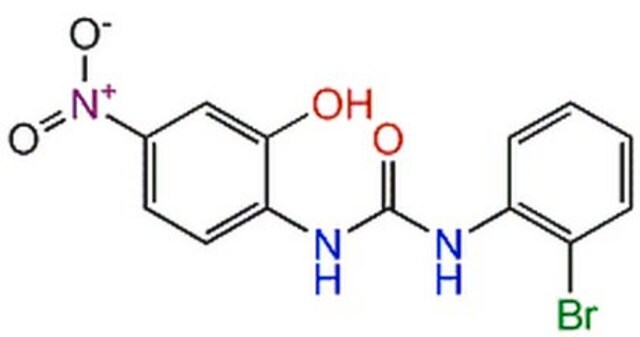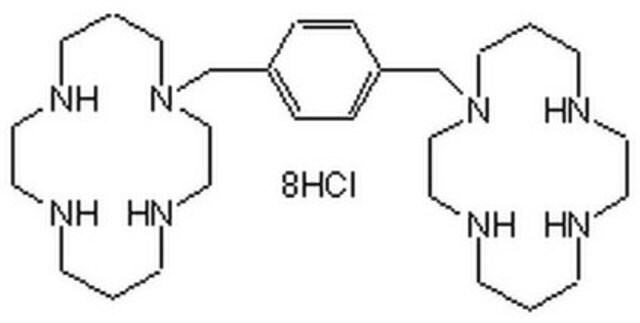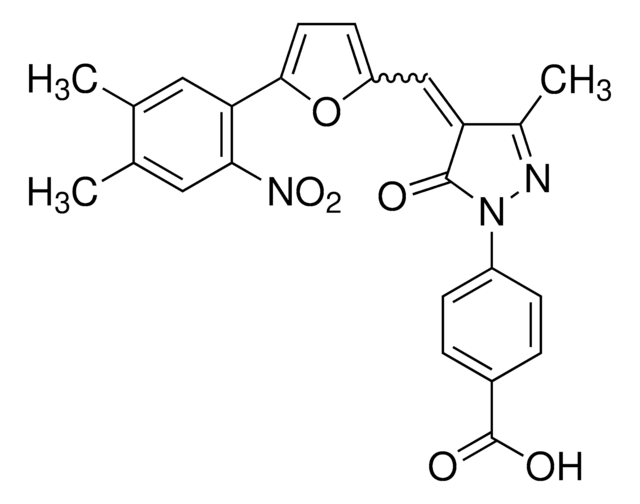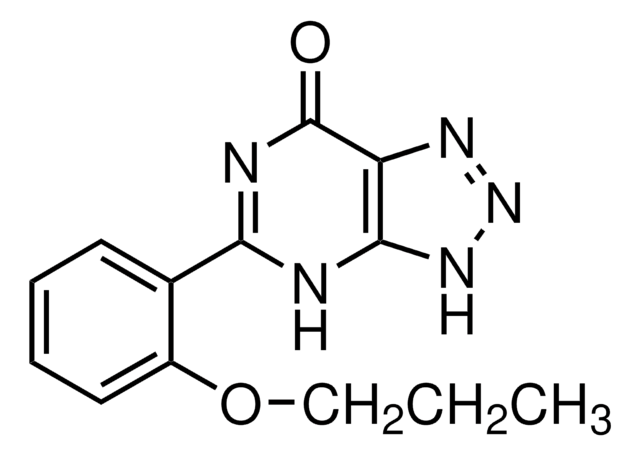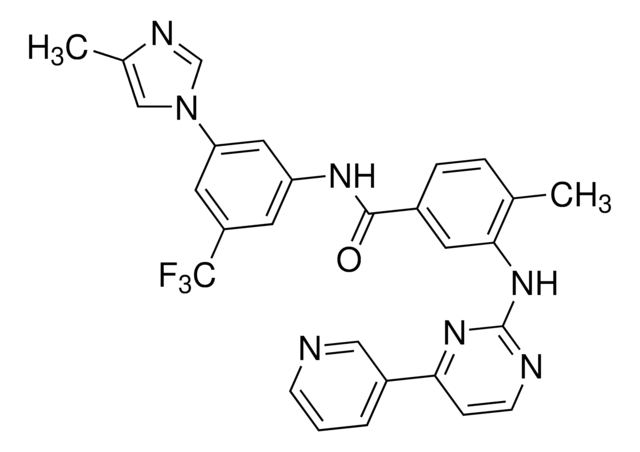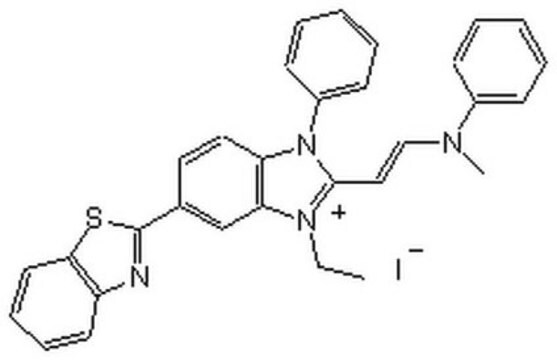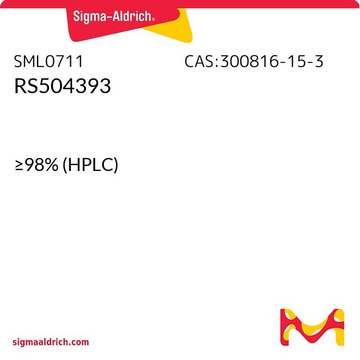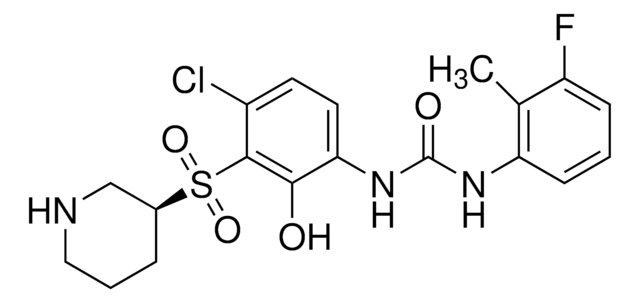SML0421
SB265610
≥98% (HPLC)
Synonim(y):
1-(2-Bromophenyl)-3-(4-cyano-1H-benzo[d] [1,2,3]triazol-7-yl)urea, N-(2-Bromophenyl)-N′-(7-cyano-1H-benzotriazol-4-yl)urea, SB 265610
About This Item
Polecane produkty
Próba
≥98% (HPLC)
Postać
powder
kolor
white to light brown
rozpuszczalność
DMSO: 15 mg/mL, clear
temp. przechowywania
2-8°C
ciąg SMILES
Brc1ccccc1NC(=O)Nc2ccc(C#N)c3nn[nH]c23
InChI
1S/C14H9BrN6O/c15-9-3-1-2-4-10(9)17-14(22)18-11-6-5-8(7-16)12-13(11)20-21-19-12/h1-6H,(H2,17,18,22)(H,19,20,21)
Klucz InChI
SEDUMQWZEOMXSO-UHFFFAOYSA-N
Zastosowanie
- as a cysteine-amino acid-cysteine (CXC)-chemokine receptor type 2 (CXCR2) antagonist to study its effects on the binding of chemokine with G-protein coupled receptors (GPCR)
- as a CX-chemokine receptor type 1 (CXCR1) inhibitor to study its effect on the chemotactic activity of chemokines on inflammatory cells
- as a CXCR2 antagonist to study its effect on migration of neutrophils to the rat brain
Działania biochem./fizjol.
Cechy i korzyści
Hasło ostrzegawcze
Warning
Zwroty wskazujące rodzaj zagrożenia
Zwroty wskazujące środki ostrożności
Klasyfikacja zagrożeń
Acute Tox. 4 Oral
Kod klasy składowania
11 - Combustible Solids
Klasa zagrożenia wodnego (WGK)
WGK 3
Temperatura zapłonu (°F)
Not applicable
Temperatura zapłonu (°C)
Not applicable
Certyfikaty analizy (CoA)
Poszukaj Certyfikaty analizy (CoA), wpisując numer partii/serii produktów. Numery serii i partii można znaleźć na etykiecie produktu po słowach „seria” lub „partia”.
Masz już ten produkt?
Dokumenty związane z niedawno zakupionymi produktami zostały zamieszczone w Bibliotece dokumentów.
Produkty
Sigma-Aldrich offers many products related to chemokine receptors for your research needs.
Nasz zespół naukowców ma doświadczenie we wszystkich obszarach badań, w tym w naukach przyrodniczych, materiałoznawstwie, syntezie chemicznej, chromatografii, analityce i wielu innych dziedzinach.
Skontaktuj się z zespołem ds. pomocy technicznej